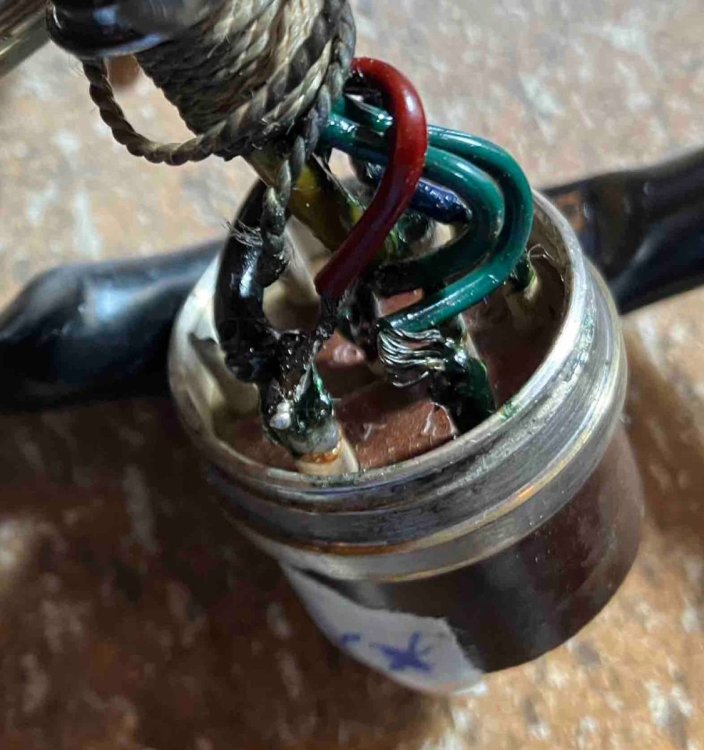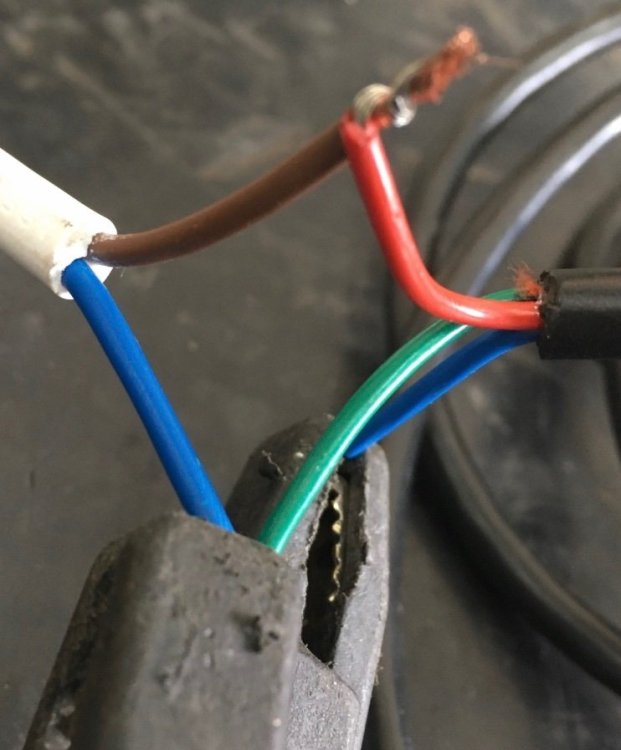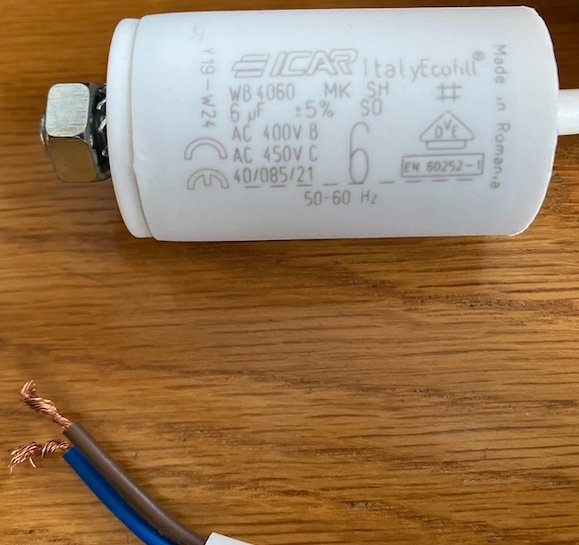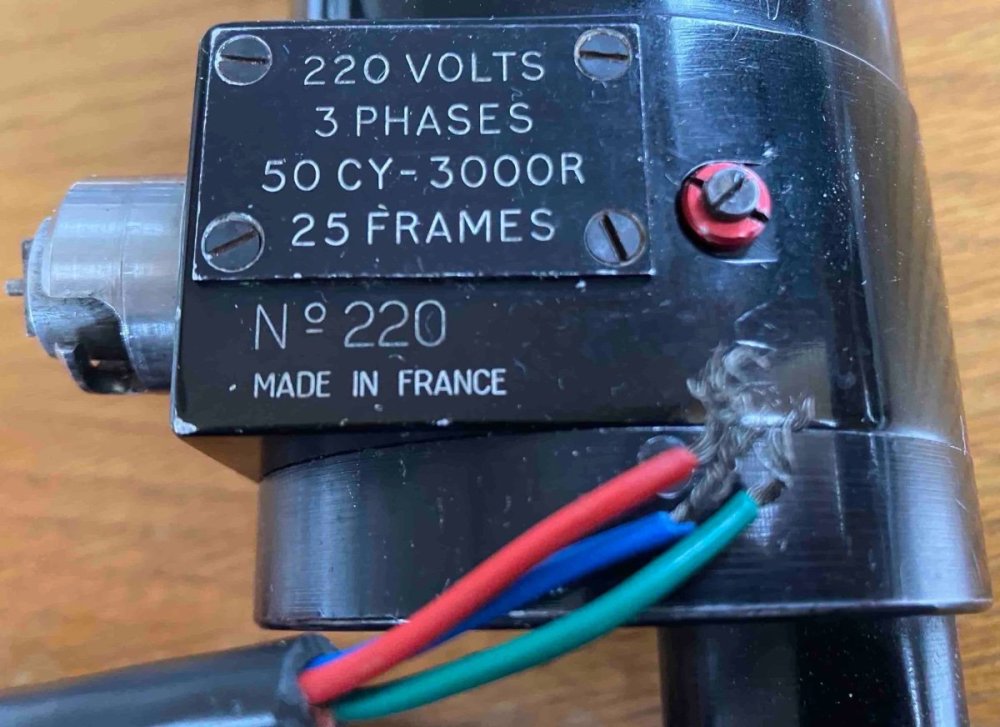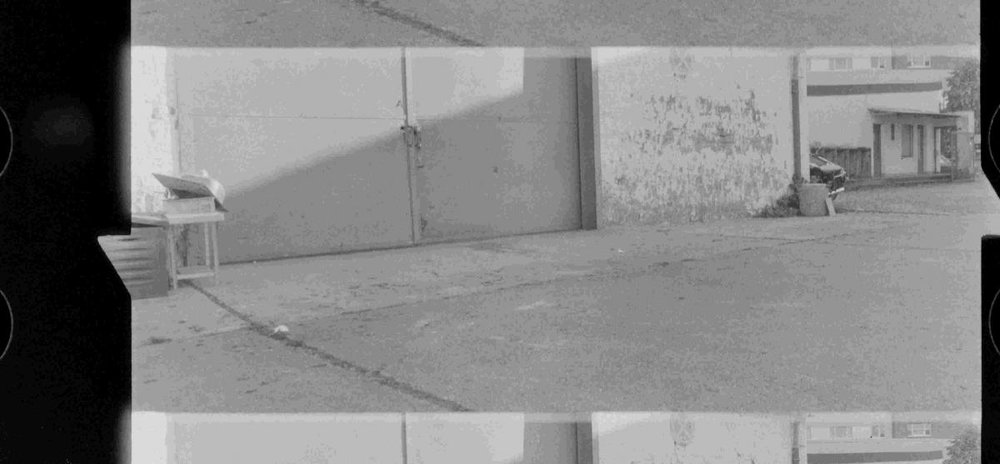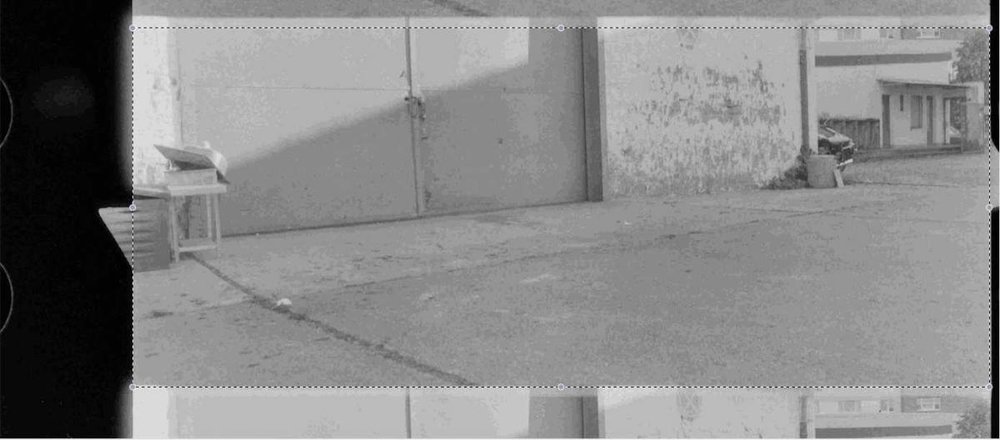
Christos Dassios
Basic Member-
Posts
13 -
Joined
-
Last visited
Profile Information
-
Occupation
Cinematographer
-
Location
Cologne
Recent Profile Visitors
760 profile views
-
Dear Forum, Today I got a Perfectone motor running, by simply providing regulated DC (+ and -). As it seems, the 2-perf CM3 needs about 8V to run stable at 24fps (with fitted magazine). But, still I'm wondering, what the different cables are good for. The thick yellow cable is minus. The thick black cable is plus. A thin red cable is attached to the thick black cable. Furthermore, there are two green and a blue one (all thin). Has anyone got some information about the wiring? Thanks
-
Looking for a Eclair Cameflex motor
Christos Dassios replied to Walt van der Aar's topic in Cine Marketplace
And here is the connection of the cables. If your motor has no cables at all, please let me know and I will open mine, to find out where the different coloured cables are attached to inside the motor.- 20 replies
-
- 1
-

-
- cameflex
- cameflex motor
-
(and 3 more)
Tagged with:
-
Looking for a Eclair Cameflex motor
Christos Dassios replied to Walt van der Aar's topic in Cine Marketplace
- 20 replies
-
- 1
-

-
- cameflex
- cameflex motor
-
(and 3 more)
Tagged with:
-
Looking for a Eclair Cameflex motor
Christos Dassios replied to Walt van der Aar's topic in Cine Marketplace
This is the capacitor, as suggested by the electrician.- 20 replies
-
- 1
-

-
- cameflex
- cameflex motor
-
(and 3 more)
Tagged with:
-
Looking for a Eclair Cameflex motor
Christos Dassios replied to Walt van der Aar's topic in Cine Marketplace
- 20 replies
-
- 1
-

-
- cameflex
- cameflex motor
-
(and 3 more)
Tagged with:
-
Looking for a Eclair Cameflex motor
Christos Dassios replied to Walt van der Aar's topic in Cine Marketplace
Dear Walt, Your motor seems to be similar to one, I bought a few years ago. Mine is marked: 220 VOLTS 3 PHASES 50CY - 3000R 25 FRAMES No 220 MADE IN FRANCE My motor's cables have three colours: Red, blue and green. Sine I also had problems to make it run, I gave it to a very experienced electrician. The electrician used a capacitor, marked: WB4060 MK SH 6μF +/-5% SO AC 400V B AC 450V C 40/085/21 50-60Hz (Currently I have problems with uploading pictures.) He attached the capacitor`s blue cable to the motor's green. And the capacitor`s brown to the motor's red. With croco clamps he gave current to the wired cables blue/green and to the motor's blue cable. It ran! Please, do not regard this as an instruction. Safety first! But maybe it helps somehow. All best, Christos- 20 replies
-
- 1
-

-
- cameflex
- cameflex motor
-
(and 3 more)
Tagged with:
-
Wow, a lot of quick and competent responses, what an impressive board! Thank you. Simon, I measured the gate and it is somewhat less than 9,5mm and more than 9,4mm in height. From a formerly shot - with an Arricam LT 2-perf - I know, there is no frameline in itself, but the images were joining accurately. Samuel and Dom, interesting information about those divots. I thought, they are needed to specify the exact frame's center vertical and horizontal. Paul-Anthony, you are right. I bought this camera in England and it is believed, that it was used by the BBC once, as along with it there came two AC 25fps motors. The modification could have been done by Alex Georgiou, maybe. The height of an exposed frame on the negative is definitively larger than of the gate. About 9,5-9,6mm including the double-exposure. I suppose, the double-exposure derives from the fact, that the 2-perf mask is not "leveled" with the original gate. There are missing about 0,6mm to cover the negative flat. Maybe some kind of flaring? Nonetheless, I have to do a test-shot with a frame leader. If the image seen on the ground glass will be within the usable image, I will no longer care about this double-exposure and regard this as a characteristic like the triangular divots. Thanks a lot again and regards to Basel, Seattle, Melbourne and Paris. Dassios
-
Dear community, finally I got some results, showing the first test-shots with an Eclair Cameflex 2-perf. I shot a shortend of b/w in magazine#1 and some color-stock in magazine#2. After developing, the film was scanned in 4k (full-frame, perf to perf). Both the shots show a kind of double-exposure instead of an accurate frameline. Masking 2.39:1 is alright, although I don't know what is actually being cropped, of what has been shown on the ground-glass before (unfortunately, I did not shoot a frameleader). But, masking 2.35:1 leaves a small "light bar" top and down, when centered vertical correctly and using the full width. Question: Is this phenomenon normal for a 2-perf Cameflex, due to its transport mechanism? Or is there a need of adjustment? If yes, where an how? Magazine's pressure-plates? By the way, the image is satisfying steady. Thank you Dassios
-
Dear Simon, thank you for this helpful hint. The "feeding" spindle has a diameter of 12mm. The "taking" spindle of 15mm. Asking a german film-stock supplier for "A"-cores gave no results. Is there maybe another name for this type of cores? On page nine of the following link - Kodak's order list - I cannot find any A-core. They only have the S-83 spools for 100ft loads. https://www.kodak.com/uploadedFiles/Motion/Products/Product_Information/Kodak-Motion-Picture-Products-Price-Catalog-US-Prices_Sept_2017_V9.pdf Thanks Christos
-
Dear Aapo, thank you for this fast response. Great help, good link. So, as far as I understand, I have to make customized cores myself with the proper diameter and to spool the stock onto them (first forward and then back again, in order to keep the keycode direction, right?). Tricky, but worth it. Thanks again and regards. Christos
-
Dear community, recently I purchased a 100ft magazine for my Eclair Cameflex CM3T, I have been looking for a long time. But actually, I don't know anything about the filmcores to be used. Please, take a look at the pictures. Maybe someone knows, what type of cores were used originally and what options are given, to use 100ft rolls nowadays. Are there any adapters available? Thank you so far Christos





